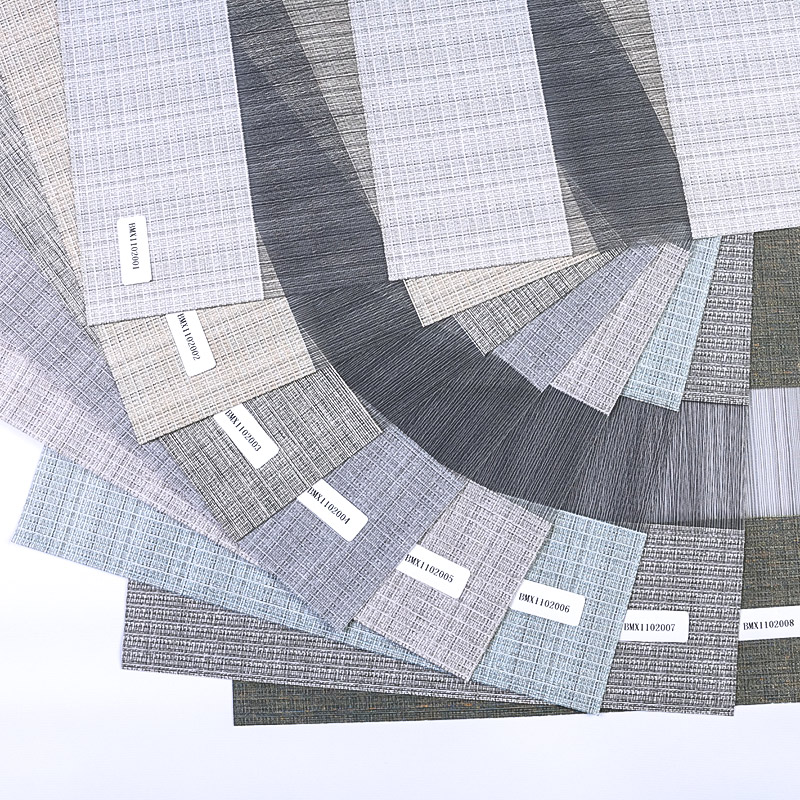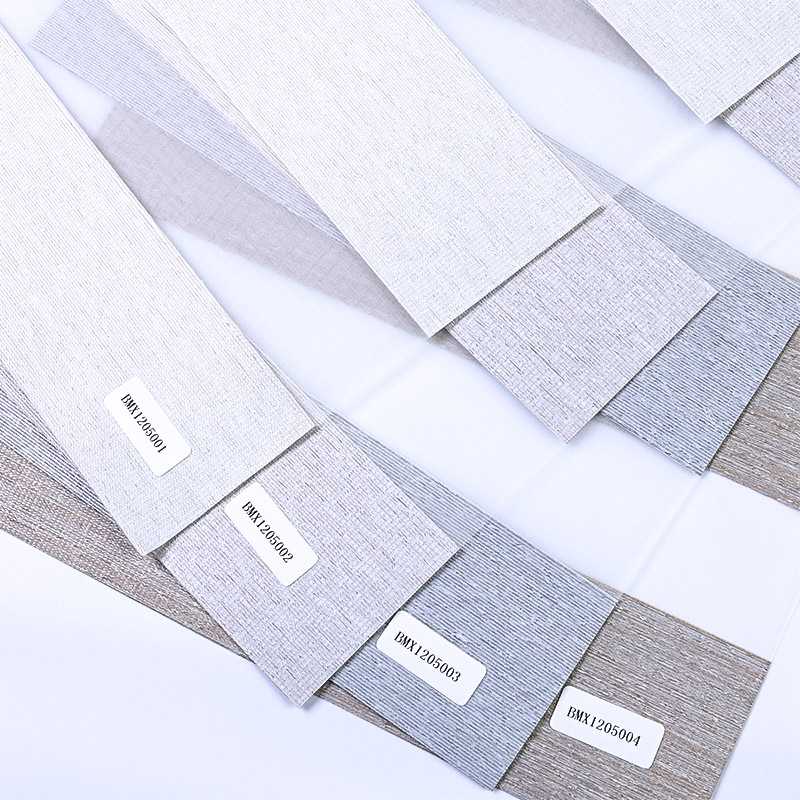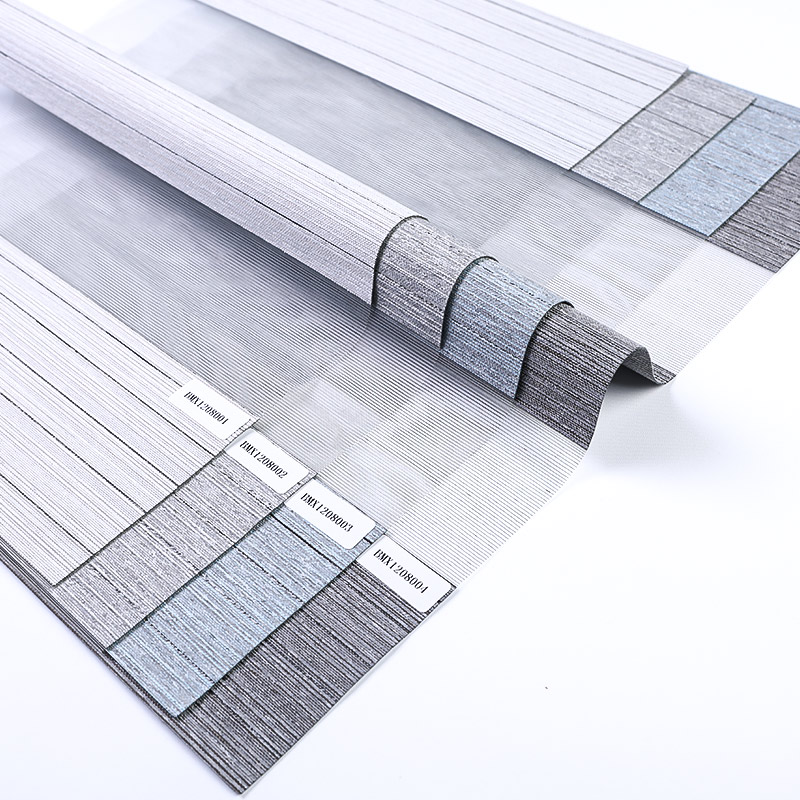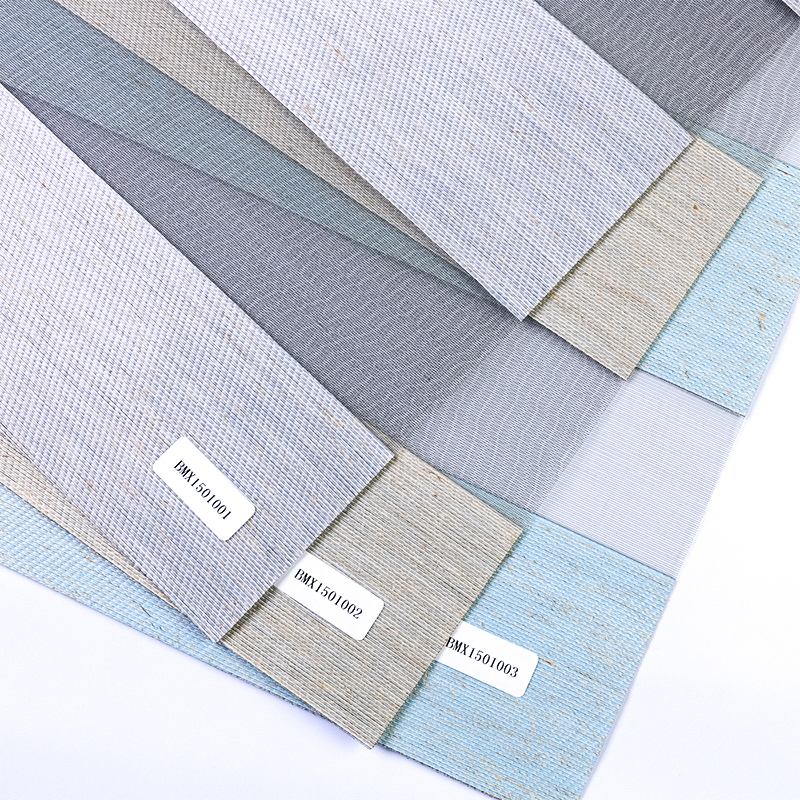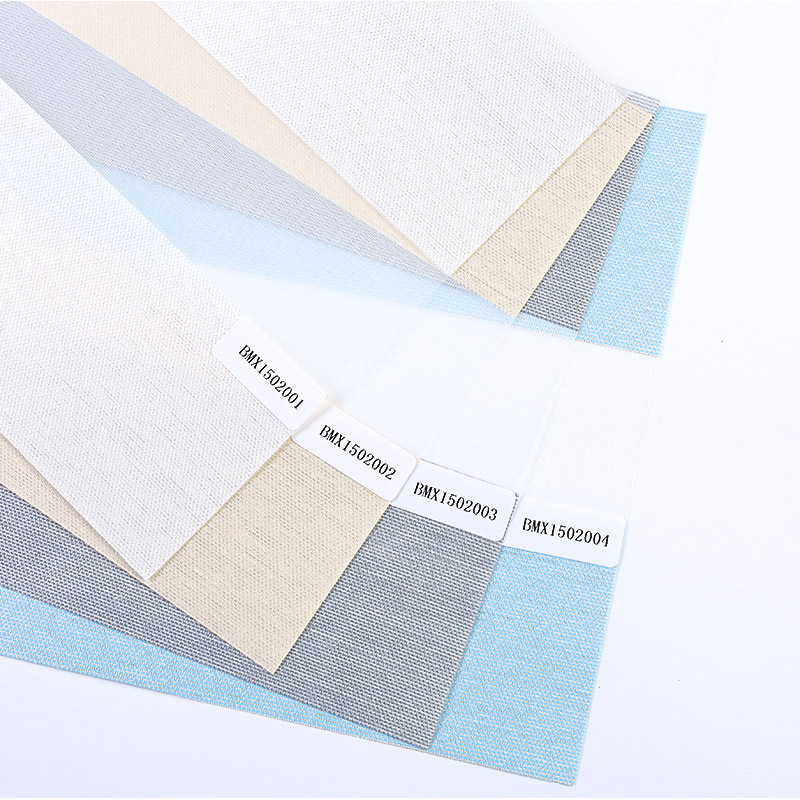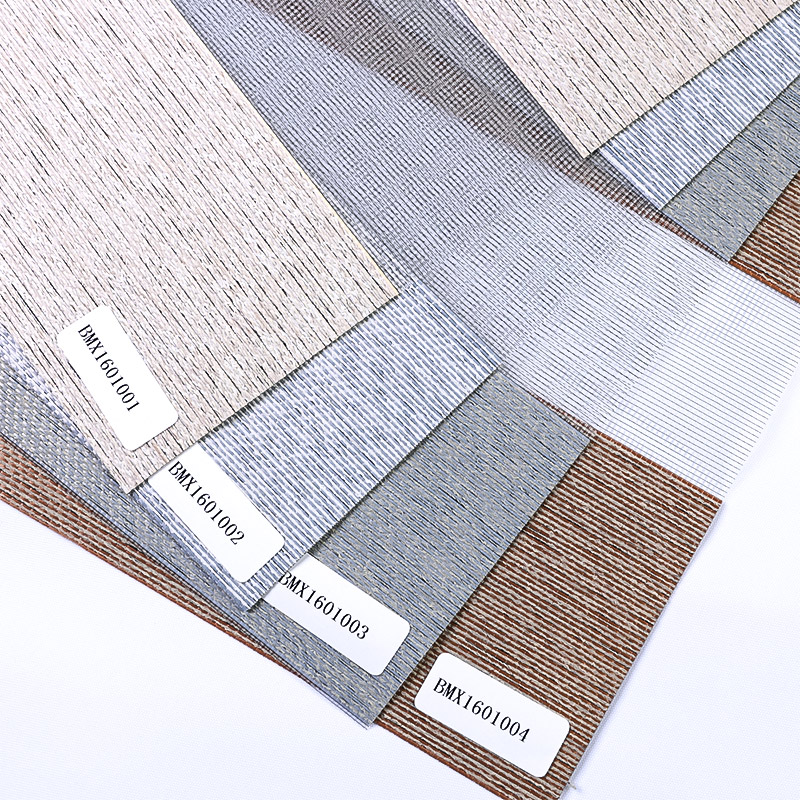The weave pattern of roller blind fabric plays a crucial role in determining both its performance in terms of light diffusion and its visual aesthetics. Here's how:
1.Light Diffusion:
Tight Weave vs. Loose Weave: The weave density is pivotal in determining the level of light diffusion in roller blind fabrics. A tight weave pattern creates a robust barrier against incoming light, making it an optimal choice for spaces where room darkening is a priority, such as bedrooms or home theaters. Conversely, blinds with a looser weave offer a balanced compromise, allowing a controlled amount of light to filter through, providing a softer and more diffused illumination.
Open Weave: Fabrics with an open weave structure, often characterized as sheer or semi-sheer, introduce a delicate balance between light diffusion and maintaining a connection with the external environment. This is particularly advantageous in areas where a bright and airy atmosphere is desired, such as living rooms or kitchens.
2.Visual Aesthetics:
Texture and Pattern: The weave pattern serves as a crucial determinant of the tactile and visual aesthetics of roller blinds. A plain weave imparts simplicity and a clean look, suitable for minimalist design schemes. Twill or Jacquard weaves, on the other hand, introduce intricate patterns and textures, adding depth and visual interest. Jacquard weaves, with their ability to create complex designs, elevate the blinds to a level of sophistication.
Transparency: Weave patterns significantly influence the transparency of the fabric. Fabrics with a more open weave structure provide a clear view of the surroundings while still offering essential sun protection. Alternatively, denser weaves enhance privacy by limiting both the view from the inside and outside.
3.Material Selection:
Natural vs Synthetic Fibers: Beyond the weave pattern, the choice of fibers within the fabric is crucial for both aesthetics and functionality. Natural fibers, like cotton and linen, contribute to a warm and organic appearance, appealing to those who prefer a softer touch. In contrast, synthetic fibers such as polyester or vinyl provide a sleek, modern aesthetic, often coupled with increased durability and resistance to environmental factors.
4.Color Variation:
Color Play: The interplay between the weave pattern and color is a nuanced aspect that significantly influences the overall visual impact of roller blinds. Complex weaves, such as Jacquard, offer a canvas for showcasing a variety of colors in a detailed and nuanced manner, creating a dynamic visual effect. Additionally, the interaction between the weave and light can impact how colors are perceived, affecting the overall mood and ambiance of the room.
5.Durability and Maintenance:
Density and Tightness: The durability of roller blind fabric is intricately tied to the density and tightness of the weave. A tightly woven fabric exhibits enhanced resistance to wear and tear, making it a practical choice for high-traffic areas. Furthermore, the maintenance requirements are influenced by the weave, as a more open pattern may be susceptible to trapping dust and may necessitate more frequent cleaning.
The weave pattern of roller blind fabric is an intricate dance between functionality and aesthetics. It shapes the way light interacts with the material, defines the visual character of the blinds, and contributes to the overall ambiance of the space. A meticulous consideration of these factors allows for a personalized and informed decision that goes beyond mere window coverings, transforming roller blinds into a design element that enhances the richness of any interior.
Roller Blinds Fabric RBMX2031
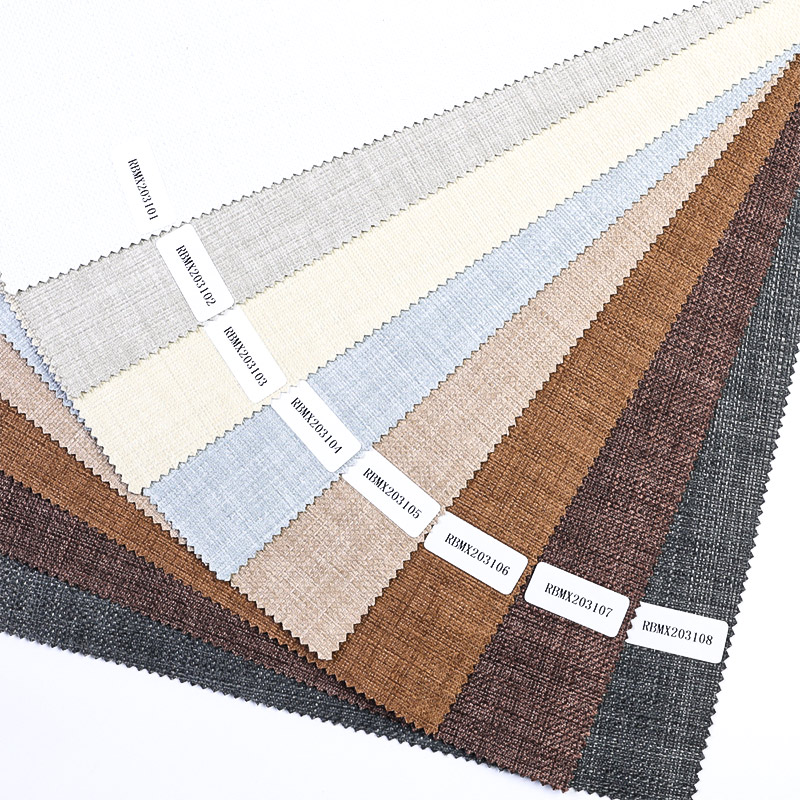
Roller Blinds Fabric RBMX2031



 EN
EN  英语
英语 中文简体
中文简体